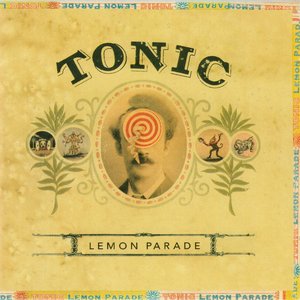

Semisonic closing time album tv#
As a result, “Closing Time” is maybe the most late-’90s thing there is.Īnd yet “Closing Time” is also weirdly contemporary - in recent years, it’s been popping up regularly in movies and TV shows as a punch line. But “Closing Time” instantly conjures its era with startling intensity. Today, most people wouldn’t know Semisonic if they personally escorted them out of their favorite bar after last call. Just one year later, Napster revolutionized popular music delivery systems, and moderately rocking nice-guy indie bands stopped having hit singles. And yet for several months in the spring and summer of ’98, “Closing Time” was everywhere in a way that songs would soon never be again. It was just a catchy, moderately rocking track by a journeyman Midwestern indie band that peaked in popularity as the alternative rock boom was hacking out its final, phlegm-y death rattle. 11 on the Billboard Hot 100) or impact on culture there were way bigger hits that year. (“Gather up your jackets, move it to the exits” “You don’t have to go home, but you can’t stay here” “Every new beginning comes from some other beginning’s end.”) “Closing Time” wasn’t an exceptional song in terms of its chart performance (it peaked at no. If you were between the ages of 13 and 24 in 1998 and at all engaged with pop culture, there’s a very good chance you can sing at least the chorus to Semisonic’s “Closing Time.” (Here’s a hint: Just say “closing time” in a sing-songy manner.) And if you know the chorus, there might be another stray lyric or two lodged somewhere in your brain as well.

Semisonic’s “Closing Time” is that kind of song. They’re so deeply embedded in our pasts that we don’t notice they’re there - and then somebody points one of them out, and this makes us laugh. (Actually, it’s more like 200.) It has nothing to do with liking these songs they become characters in our memories, which makes them as personal as family photographs. We carry them in our subconscious like our hands harbor germs we don’t always see them but they infect us all the same, and there’s seemingly millions of them. These songs do make us think about our own lives. There’s another type of song that endures but in a completely different way. It’s hard to talk about them without sounding like a VH1 retrospective. When we hear these songs, we think about the singer, not ourselves. There’s no room for us the legend is too expansive. We all recognize their greatness, but they don’t really fit into our daily lives. These songs belong to everybody, which means they belong to no one. And while it’s been only five years since Amy Winehouse released “Rehab,” people from here on out will no doubt focus on the song’s tragic irony, not Mark Ronson’s brassy production. “Teen Spirit” now tells us what Nirvana is supposed to represent about ’90s culture (namely shooting heroin and hating yourself). Similarly, listeners no longer notice the jokey reference to a brand of kiddie underarm deodorant in the title of Nirvana’s “Smells Like Teen Spirit” 20 years later, the song has been drained of its irreverence.

It’s been 40 years since “Imagine” was a hit, and if people still care about that song 400 years from now, it likely will be tied up in the altruistic saintliness that John Lennon (theoretically) still signifies. The “test of time” typically rewards iconic artists who produce capital-C Classic work which is why over the course of decades, certain songs lose their original meanings and become statements about the legacies of their creators. At some point, it was decided that in order for a song to be great, it has to “stand the test of time.” This has since become a problematic cliché, but initially it must’ve seemed like a bright idea, and not just something that Jethro Tull fans use to dismiss Justin Bieber.


 0 kommentar(er)
0 kommentar(er)
